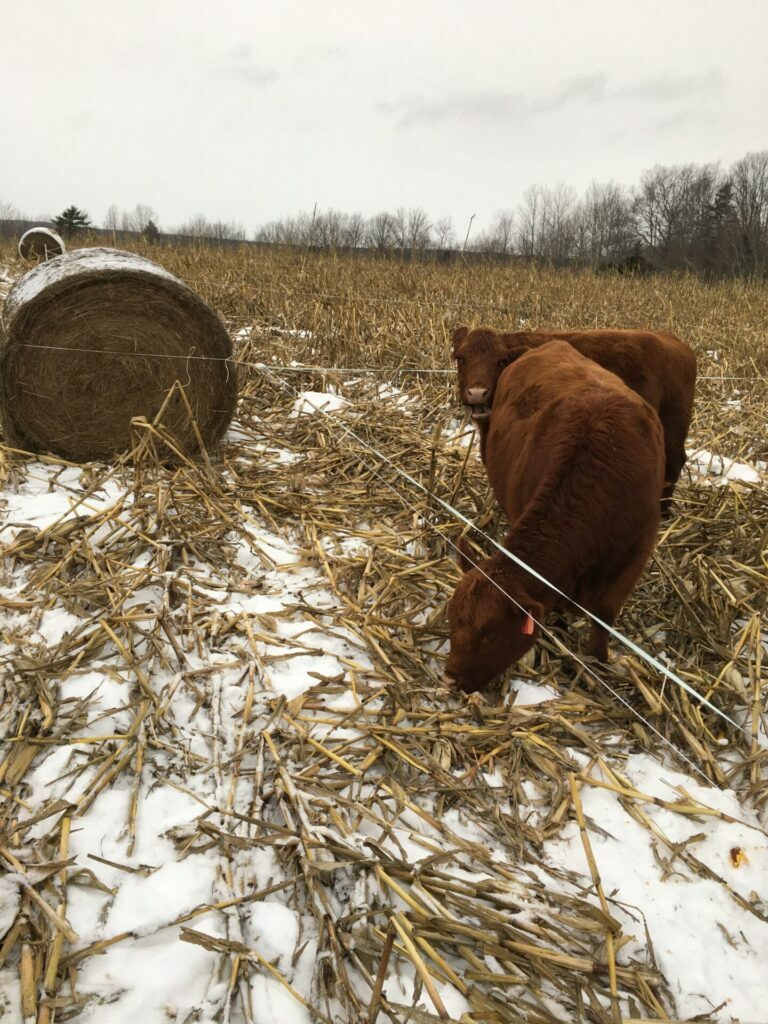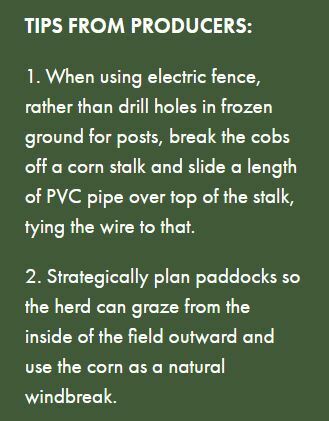



7 tips for grazing corn
Grazing standing corn has many benefits but must be managed properlyWith winter rolling in, you may be turning to extended grazing to help keep cattle out on pasture longer. Grazing standing corn has many benefits, including being a high-energy forage, but can also pose animal health risks if not managed properly, according to the Canadian Beef Cattle Research Council.
Here are some tips to help you successfully manage standing corn for grazing.
Ease cattle into grazing corn
If this is the first-time grazing corn, it may take some time for cattle to realize what they are supposed to do with the tall stalks. It is a good idea to slowly transition cattle from pasture to fall or winter corn grazing. Regardless of how familiar they are with grazing, the rumen takes time to adapt to the new feed source. One way to do this is to provide access to only a couple days’ worth of feed and also supply cattle with an alternative feed source such as a bale of hay to help them through the transition period.
Limit cows to 3-4 days of feed
Inevitably, when cattle are turned out, they will eat the best (most palatable) parts of the plant first, which is the cob. If cows are allowed access too much corn, there can be problems with rumen acidosis. Research conducted at the Western Beef Development Centre in Saskatchewan suggests limiting cattle to three to four days’ worth of feed and providing a fibre source (low-quality hay or straw) to help mitigate the risk of acidosis.
Strip grazing using electric fence provides a more uniform nutrient intake, reducing the risk of acidosis caused by cattle only eating high energy cobs, and utilization per acre is improved. This also reduces trampling and wastage.

Protect cattle from the elements
In years of heavy snowfall, cattle may have better access to standing corn compared to swathed crops under snow. Observations have also shown standing corn providing protection from the wind during inclement weather. Cattle can graze through the winter as long as they have access to water or loose snow and shelter.
Feed test, feed test, feed test
In most cases corn exceeds the nutrient requirements of cattle in the first two trimesters of pregnancy, but it is still important to feed test to determine if the cows’ requirements will be met by grazing corn alone or if additional supplementation (protein) should be provided. Testing corn for mycotoxins is also recommended. Since corn is grazed standing, it is recommended to do a feed and mycotoxin test a couple weeks before grazing so that it is a close representation of what the cattle will actually be grazing. Visit the BCRC’s Feed Quality, Testing & Analysis for Beef Cattle webpage for more information.

Have a plan B
Even with the best plans in place weather conditions such as too much snow, lack of frost or even too much rain can put an end to corn grazing. Make sure you have an alternative winter feed in case you are forced to pull cows from the corn early.
Thinking about next year?
Plan ahead
Select an early-maturing variety that will match the Corn Heat Units (CHU) rating for your area to increase the chance of a high-yielding, high-quality corn crop.
Planting an early-maturing, silage-type corn variety for use in late-season grazing has great potential since the productivity is very high and the taller plant allows cattle to harvest the stand when the snow gets deep.
Plant for success
Choosing the right variety of corn is very important to ensure cattle don’t experience grain overload or acidosis. Learn more from this producer.
Read 10 Corn Planting Tips, which includes an overview of site and variety selection, seeding equipment, weed control and fertility.
Grazing corn can be seeded with an air seeder, air drill, row planter or conventional hoe drill. From Manitoba to British Columbia, the recommended seeding depth is 1.5-2 inches deep, preferably into moisture, at a soil temperature of at least 10 degrees Celsius. From Ontario to Prince Edward Island, the recommended seeding depth ranges from 1.5-3 inches deep. Row spacing of 30 inches is recommended.
Learn more
For more tips on grazing corn plus an excellent overview of considerations when using extended grazing systems, view the BCRC webinar, Refining Corn Grazing Recommendations, presented by Dr. Bart Lardner. Highlights include understanding Corn Heat Units (22:48), agronomics of growing corn (23:55), grazing management (30:35) and research results (33:00).
Headline image: Photo courtesy of Saskatchewan beef producer Ryan Beierbach


